Despite being one of the smallest European capitals, Ljubljana is one of the most interesting cities I ever visited. The capital of Slovenia is a fine example of urban planning and, paired with the vast green spaces, offers an immersive experience to travelers. Moreover, the city’s compact size is ideal if you are looking for a laid-back journey: there are plenty of fascinating things to do in Ljubljana to keep you occupied for days.
The city’s rhythms and daily life fascinated me, and in this Ljubljana travel guide, you’ll find everything you need to know for your trip. Specifically, you’ll discover a selection of things to see in Slovenia’s capital and read about the top accommodations in town. Moreover, I’ll share some day trips from Ljubljana that will help you enhance your Slovenian journey. Last but not least, in this guide, you’ll find various travel tips and my photos from this beautiful city.
So, let’s begin with the guide to Slovenia’s capital and see how to make the most of your trip to Ljubljana.
*Some links are affiliate links. It means that if you buy something, I might earn a small commission at no additional cost to you.
Things to do in Ljubljana, Slovenia

Less than 300,000 people call Ljubljana home, but this doesn’t translate to a lack of sightseeing. On the contrary, as you will see in the following lines, the picturesque Slovenian capital offers a wide array of activities, and every corner is filled with history.
And here’s a travel tip before we start with the things to do in Ljubljana: consider purchasing a City Card to save money and time during your stay. The Ljubljana City Card comes at an affordable price (49 euros for three days) and grants you access to several museums and public transport. You can purchase the City Card here.
And now, let’s start with the things you shouldn’t miss when visiting the city.
Start your Ljubljana wanderings from Prešeren Square
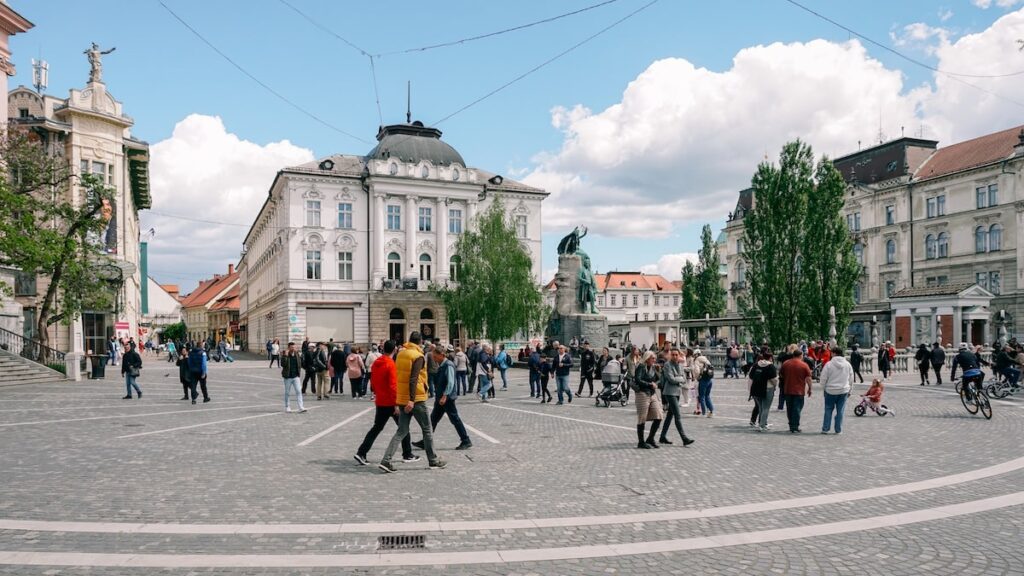
The iconic Prešeren Square is literally the city’s heart. That’s where locals and visitors unwind, and the constant flow of people makes it the liveliest spot in town. The location is prime and serves as an introduction to the city: straight in front of it, you’ll see the Ljubljanica River and the famous Triple Bridge.
The Square is named after Slovenia’s national poet, France Prešeren, and a statue commemorating him stands proudly in front of the Central Pharmacy building. It’s hard to find a livelier location in the city: known for festivals and protests, and as a gathering point, the Prešeren Square is a place you’ll cross several times during your trip.
When you visit it for the first time, make sure to stop for a couple of minutes to observe the Art Nouveau buildings surrounding it and soak in the views of the river. Observe how the city unfolds from this funnel-shaped square, and use this beautiful location to orient yourself for your future walks in town.
Admire the Triple Bridge (Tromostovje)
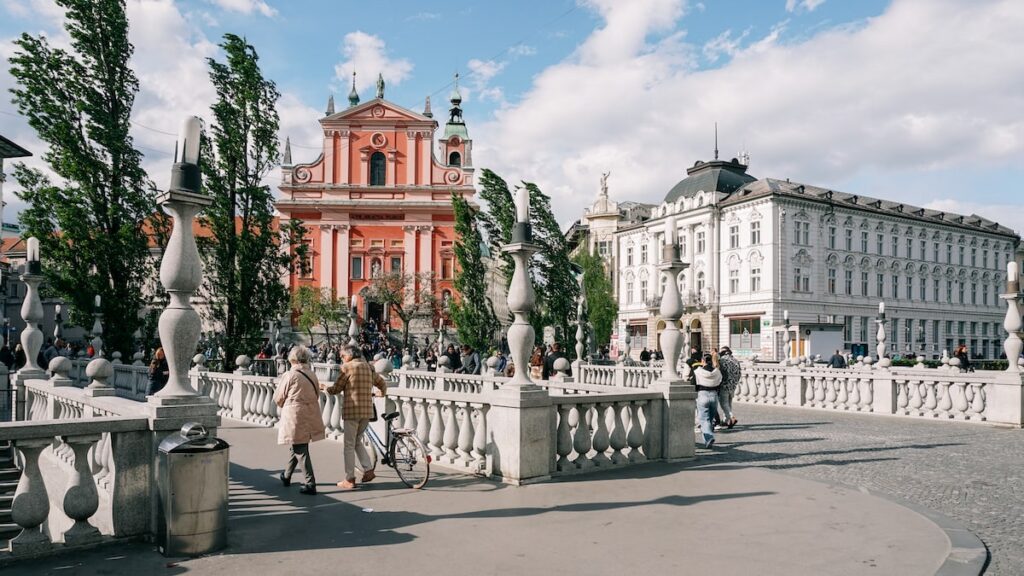
As you will see in the following, Ljubljana has some stunning bridges. However, the one that really stands out is the Tromostovje or Triple Bridge. You might think of it as an architectural oddity because the Tromostovje comprises three bridges spanning the river. The Triple Bridge is the oldest bridge in Ljubljana, and the first references date back to 1280. However, the bridge received a makeover in the 1930s by the most prominent Slovenian architect, Jože Plečnik, and nowadays is assumed to be one of the prettiest in Europe.
The Triple Bridge connects the medieval town and Prešeren Square, and thousands of people walk through it daily. It’s probably the busiest spot in town—and, apparently, among the most photographed.
Visit the Jože Plečnik House in Ljubljana’s Trnovo district

In the introduction of this Ljubljana travel guide, I wrote about the city’s exemplary urban planning. In addition, in the info about the Triple Bridge, I mentioned the name of the most famous Slovenian architect, Jože Plečnik. Therefore, it’s only fair to add that among the top things to do in Ljubljana is a visit to the architect’s house, which nowadays hosts a museum dedicated to his oeuvre.
Jože Plečnik is the man who transformed the sleepy town into a proper European capital. Apart from being a prolific architect, Jože Plečnik was also an innovative urban planner tightly connected to his hometown. Although he left his mark in Vienna and Prague, the transformation of Ljubljana was his masterpiece. He replanned the entire city on two axes, land and water, and by expanding its green spaces, he delivered the city we admire today.
His humble house in the Trnovo district lies a couple of minutes away from the city center and hosts a museum dedicated to him. In the exhibition halls, you can see his sketches and learn about his daily routine: despite being interested in the well-being of people, Jože Plečnik was a loner. Every full hour, the museum offers a complimentary tour, which includes rooms that are not otherwise accessible. I encourage you to visit the Jože Plečnik Museum and join the fascinating tour.
Holders of the Ljubljana City Card get free access to both the museum and the tour. Don’t miss it.
Bonus: The museum and the tour impressed me. I wrote a separate article about the Jože Plečnik Museum here if you want to learn more.
Discover the bronze faces at Ključavničarska Ulica
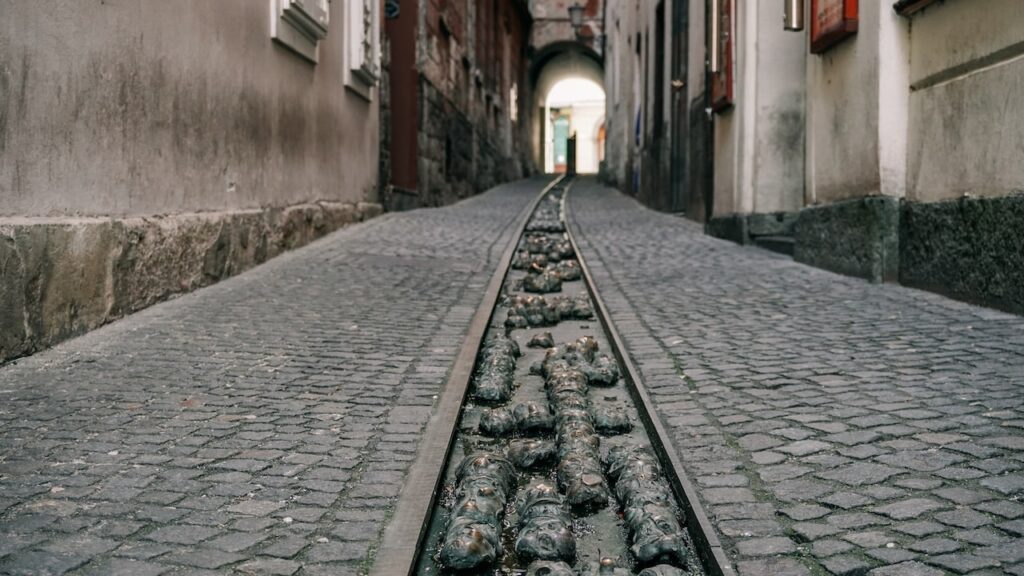
The Ključavničarska ulica, or Locksmith’s Street, offers one of the quirkiest things to see in Ljubljana. Just off the embankments of the Ljubljanica River, you will come across a relatively bizarre spectacle. Approximately 700 bronze faces are engraved along the narrow alley, and their expressions are more scary than welcoming. However, a closer look will reveal the different expressions—crying, laughing, screaming—and they are assumed to be a tribute to Greek mythology.
The bronze faces are created by the local sculptor Jakov Brdar, and they offer an odd perspective of the picturesque location by the river. Although you can’t call it dark tourism, visiting Locksmith’s Street is a must if you have a thing for bizarre spots. You can see Locksmith’s Street on Google Maps here.
Go on a Ljubljana River Tour
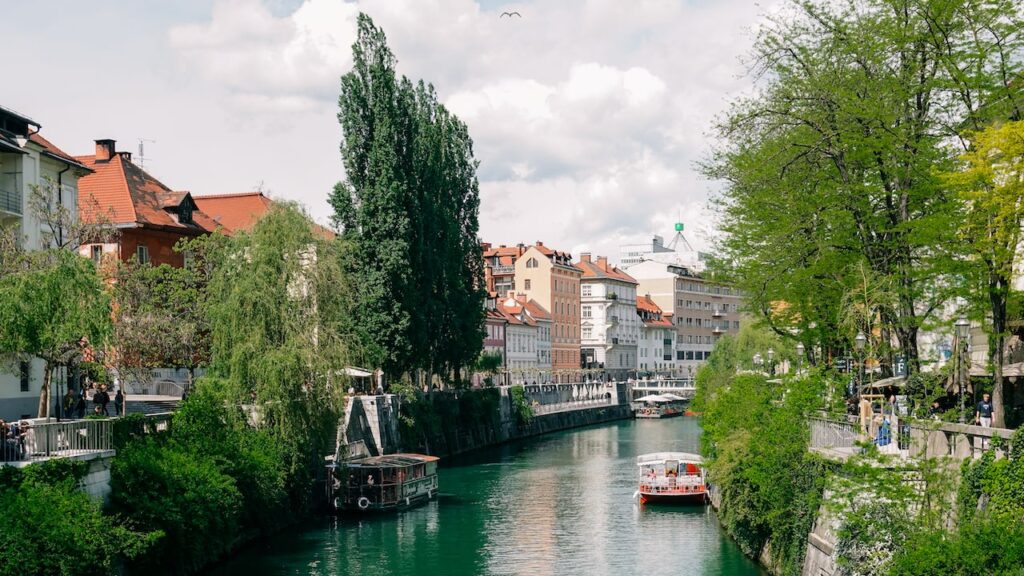
If this is not your first time on my travels, you probably know I have a thing for boat tours -like the ones in Berlin, Bergen, or Copenhagen. Despite being a relatively saturated tourist activity, a boat tour can give you unique perspectives of a place and help you get an impression of a city’s size. Moreover, it’s a relaxing way to do some sightseeing and see a place from the water level. As you can easily imagine, it sounded like a must for me to join a Ljubljanica River Tour and see the Slovenian capital from a different angle.
Well, I ended up joining two boat tours. You see, the City Card offers two free options: the wooden Ljubljanica Boat and the Tourist Boat. Both of them last one hour, and the boats go through the city center, end up on the outskirts, and then return to the city through its most iconic bridges. Yes, if you want to see and photograph the Triple Bridge from the water, that’s your best chance.
Here you can see my 4K video and what it feels like being on a boat tour in Ljubljana:
The services are of high quality (as in everything in Slovenia), and I had a great time enjoying the city from the water. The Ljubljanica River is beautiful, and the trees that bend over it create a fairy-tale atmosphere. If you enjoy boat tours in foreign cities, don’t miss the chance to join one.
As I already mentioned, if you buy the City Card, you can take these two river cruises for free. Otherwise, each tour costs 14 euros.
See the bridges of Ljubljana
Ljubljana is home to numerous bridges, most of which are stunning. I already mentioned the iconic Triple Bridge, but there is more to see when visiting the city. Each bridge has a unique style, and walking along them is a fun thing to do in town. Here are the ones that you simply can’t miss.
The Dragon Bridge
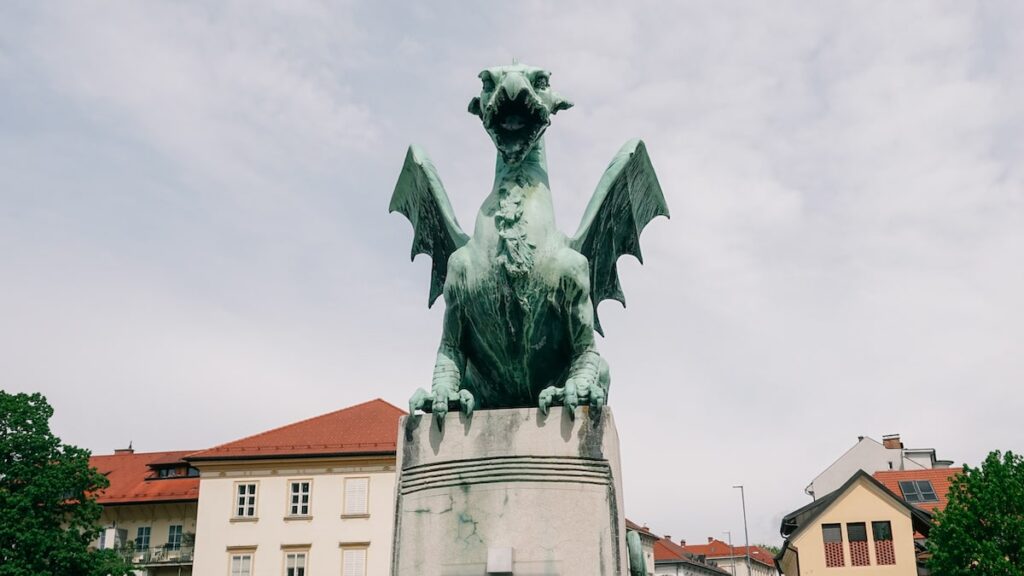
Almost as famous as the Triple, the Dragon Bridge is among the city’s emblems. The road bridge opposite the Ljubljana Central Market is renowned for its 20th-century style, which follows the Vienna Secession architectural style. What makes it famous is the various depictions of dragons (hence its name), featuring four of them in the corners and another sixteen in various spots. According to the legend, Jason and the Argonauts killed a dragon on-site, and at this spot, Ljubljana was founded.
The Butchers Bridge
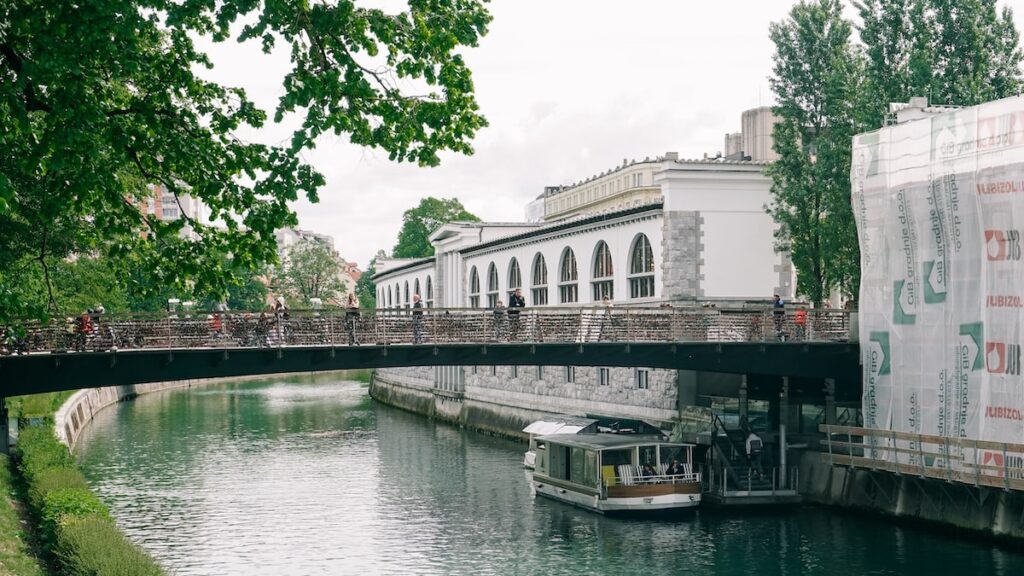
The idea for a bridge on this spot belongs to Jože Plečnik -he envisioned it already in 1930. However, the bridge opened recently, in 2010, and since then, it’s been one of the city’s most popular locations. As is the case with other bridges in Europe, padlocks are decorating it as a symbol of eternal love, and the sculptures are by Jakov Brdar.
The Cobblers Bridge
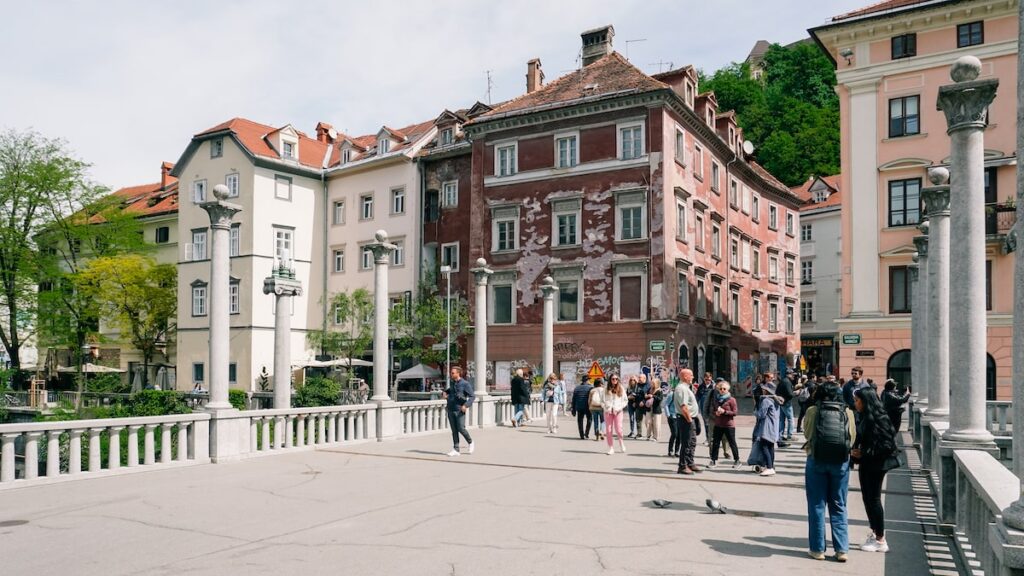
Last but not least, one of the prettiest bridges I saw in Ljubljana is the Cobblers Bridge. Equally fascinating when seen from a boat tour, it is among the most elegant sights in town. Its decoration is stunning, featuring Corinthian and Ionic pillars. Of course, Jože Plečnik planned this bridge, too.
Cycle around Ljubljana

Yes, Ljubljana might not have the infrastructure and bike lanes of Berlin or Copenhagen, but there’s enough space for cyclists. The city has adopted a green take on its future, and cycling has become one of the cornerstone elements of its identity. The truth is that the cobblestoned streets of the old town might not be ideal for cycling, but you can still use your bike and do some sightseeing. Moreover, after exiting the medieval part, you will enjoy bike lanes and empty streets that will take you everywhere around the town.
And here are two travel tips for cycling in Ljubljana. The first is that the City Card offers you four hours a bike for free. In my experience, this is enough time to see the city’s downtown and then go on a short tour in the outskirts. You can pick up your free bike outside the Tourist Information Center at the Triple Bridge.
The second tip for cycling in Slovenia’s capital doesn’t require anything but the BicikeLJ smartphone app. After downloading it, you can enjoy free city rides for up to 60 minutes. There are various pickup and drop-off locations around town, and you can be informed of their location through the in-app map. In addition, the app allows you to ride a bicycle for up to 60 minutes, leave it at a station, and get another bike for free. Given the short distances, you won’t usually need a bicycle for more than an hour, making it an ideal option to explore Ljubljana. I used it several times when I visited the city, and the bikes felt solid and in good condition.
You can download the BicikeLJ app from their website here. It’s available for both iPhone and Android devices.
And if you want more info about riding a bike in town, you can read my dedicated article about cycling in Ljubljana.
Visit the Ljubljana Castle
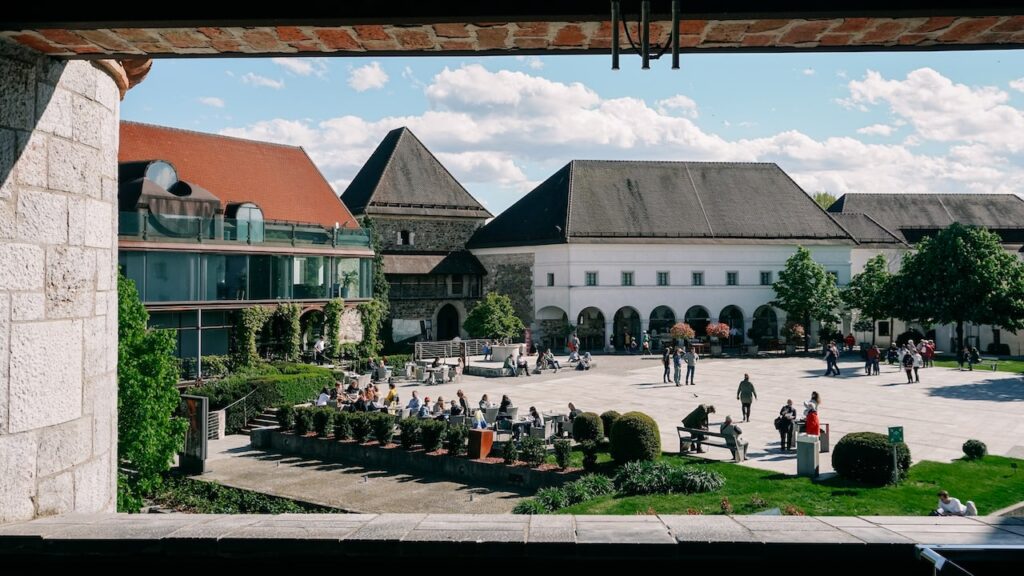
It might not be the most impressive castle you’ve ever visited, but the truth is that the Ljubljana Castle deserves a visit. Apart from being the city’s trademark, it also offers impressive city views. On a clear day, you can see the nearby snowcapped mountains and enjoy the Slovenian landscape. Most people visit the castle because of its Outlook Tower, which offers panoramic views (see the article’s cover photo) and is a great place to unwind.
The Ljubljana Castle stands on a hill above the city, and you have two options for visiting it. The first is to take the road behind the Central Market and follow the path. It’s an easy yet steep way to the top. However, most people prefer the second option, which is the funicular railway. This is a much easier way to get to the castle, as it takes only 4-5 minutes to the top.
Apart from the magnificent views, the castle houses a puppet museum and an exhibition about the history of Slovenia, and you can also see the Prison and the small Chapel of Saint George. There’s also a cafe and a wine bar on site.
I thought the Ljubljana Castle deserved a visit, but it was pretty expensive as a standalone experience. The City Card came in handy here because it included the funicular railway ride, the entrance to the castle, and all the rooms.
Immerse yourself in the museums of Ljubljana
I mentioned earlier the compact size of Ljubljana and how the city impressed me with its variety of sightseeing options. One of the things that impressed me was the number of museums the city hosts. It was not just the Jože Plečnik Museum that I visited; the fact that the Ljubljana City Card offered free access to all the city museums meant that I could glimpse the history and art of Ljubljana.
Here are the museums I recommend visiting in town.
Cukrarna
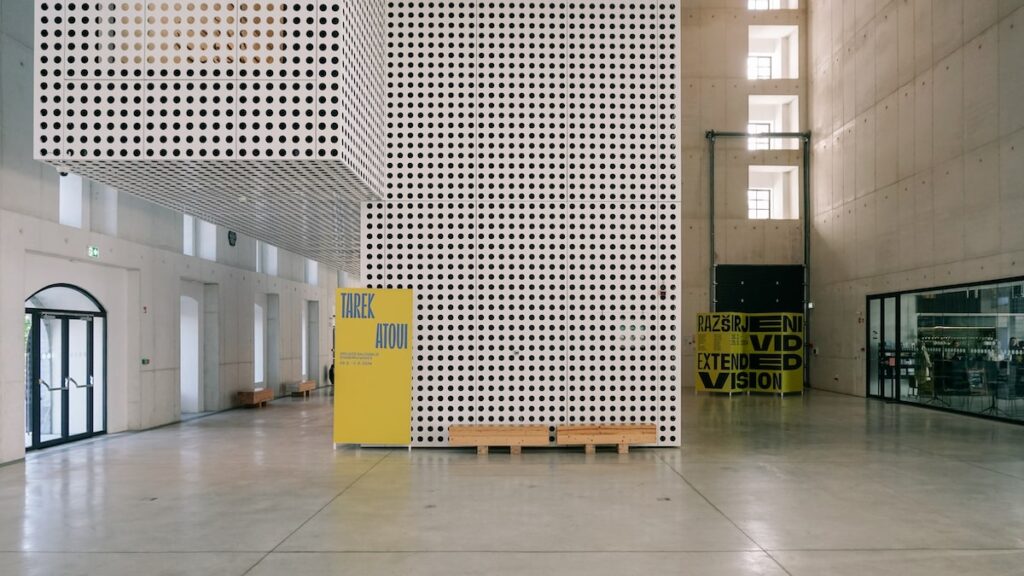
This impressive sugar factory has been converted into a contemporary art center. While the building itself is beautiful for architecture lovers, the truth is that the exhibitions hosted in Cukrarna are high-quality. When I visited it, I discovered emerging artists and the installations were fascinating. Cukrarna also has a nice cafe where you can unwind after seeing the exhibitions. You can read more about Cukrarna Gallery here.
Museum of Contemporary Art Metelkova
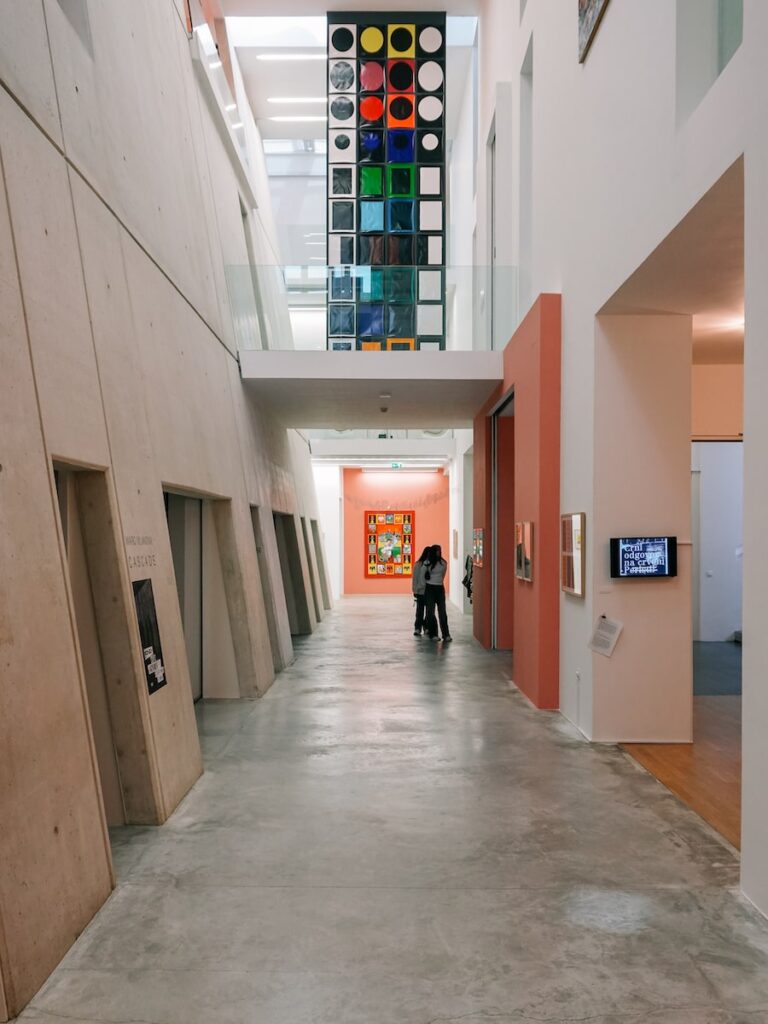
Attached to the Metelkova art center, the city’s alternative neighborhood, you’ll also find the Museum of Contemporary Art. It has various exhibition rooms and a wide variety of famous and lesser-known famous artists. The exhibitions were interesting and the museum has an extensive library about art.
Bankarium – The Slovenian Monetary Museum
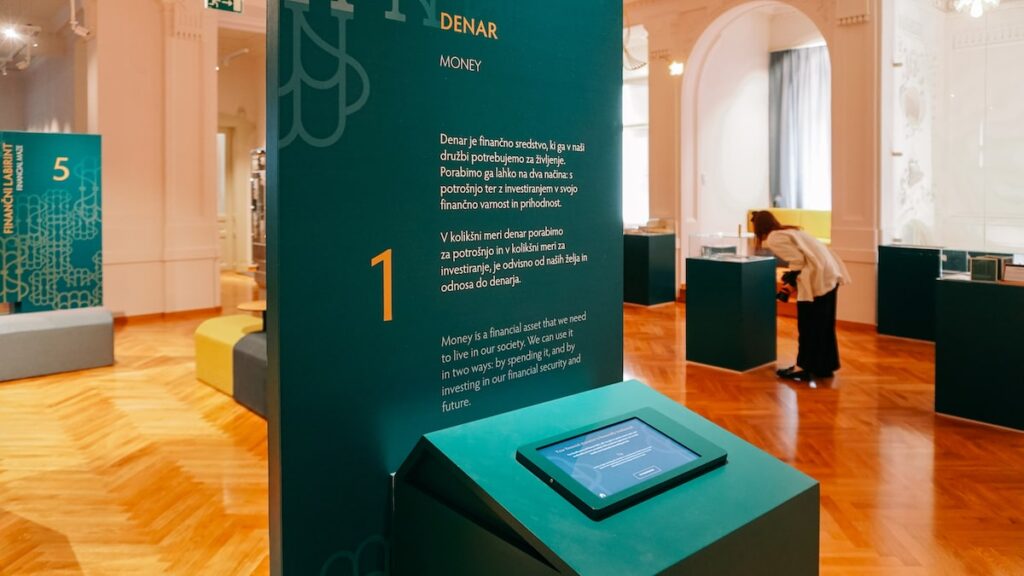
I won’t lie: I decided to visit the Bankarium because I love Art Nouveau Architecture (I even traveled to Riga, Latvia, for it). The building housing the Bankarium is one of the finest Jugendstil buildings in Ljubljana, and I was curious to see it up close. However, I was equally impressed by the Slovenian Monetary Museum. Besides providing information about the monetary and banking history of Slovenia, the museum offers an interactive experience that will help you learn more about your own relationship with money. Fun and interesting.
House of Illusions

Last but not least, I visited the House of Illusions for the first time. There are plenty of such places around Europe, but I finally decided to visit one in Ljubljana. This is by no means a museum, but due to its highly interactive nature, it is a fun thing to do in Ljubljana. The rooms play with our perception of reality; if you are an avid Instagrammer, you’ll find plenty of cool photos to shoot.
I wrote a separate article about Ljubljana’s House of Illusions here.
See up close Gornji trg 19
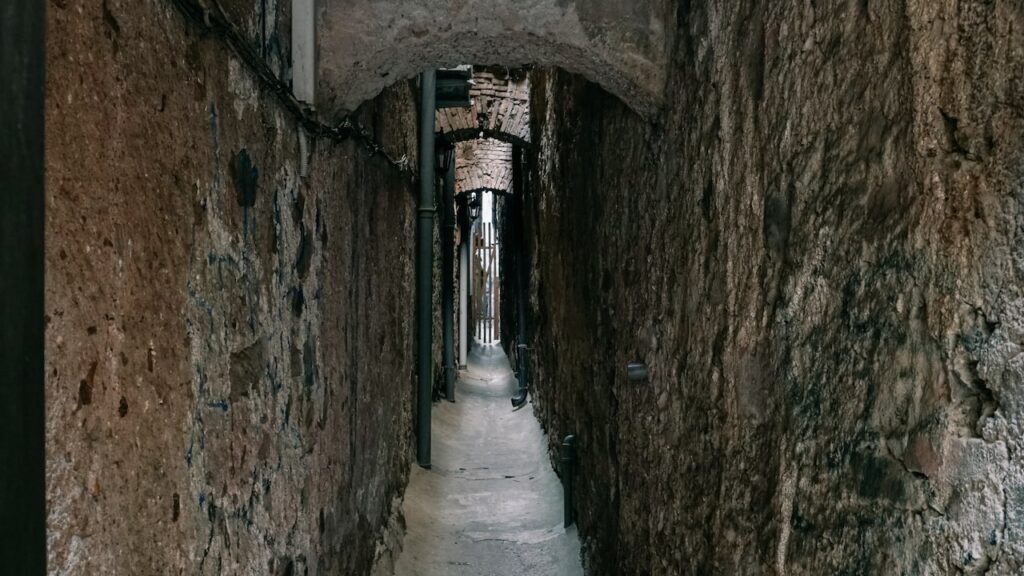
This is much closer to dark tourism than anything else I visited in Ljubljana. This tiny tunnel is squeezed between two buildings and ends at a locked door. However, its story dates back to medieval times and is interesting. Such tunnels between buildings were used as ventilation corridors in case of fire: the smoke wouldn’t spread into the neighboring buildings and houses, preventing the suffocation of entire neighborhoods.
On the other hand, it also served as a wind draught, helping the walls that never received sunlight to dry quickly. Let alone, of course, that on hot days, the so-called “scheiss-gasse” offered some fresh air to people having windows overlooking such corridors. Today, most ventilation corridors are bricked, and that’s probably the only one you can see. You can walk in this tiny tunnel and feel the vibe of medieval daily life.
You can see the Gornji trg 19 on Google Maps here.
Check the blueness of the sky with the Cyanometer
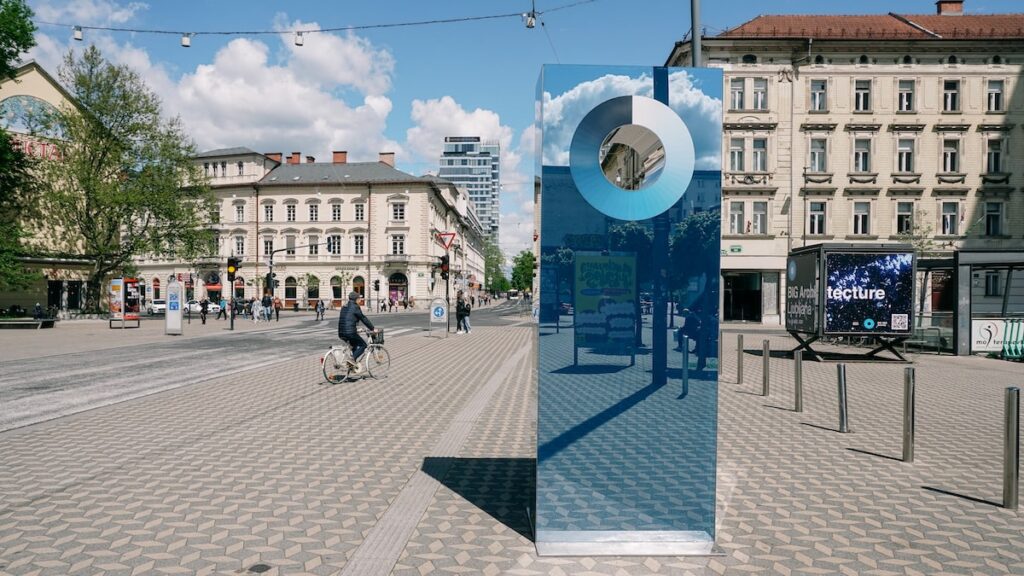
Last but definitely not least, one of the most fun things to see in Ljubljana is the Cyanometer. Resembling a monolith, the Cyanometer constantly measures the blueness of the sky and shares information about the air quality in the Slovenian capital. The idea derives from the tool that Swiss physicist Horace-Bénédict de Saussure created in 1789 in an attempt to predict the weather. The Ljubljana Cyanometer was created in 2016 by Martin Bricelj Baraga and displays information about air pollution in real-time.
Moreover, the Cyanometer takes photos of the sky, and the images provide information about the sky’s blueness. It operates on solar energy, and it’s a quirky thing to see when visiting the city.
Things to do in Ljubljana: the day trips
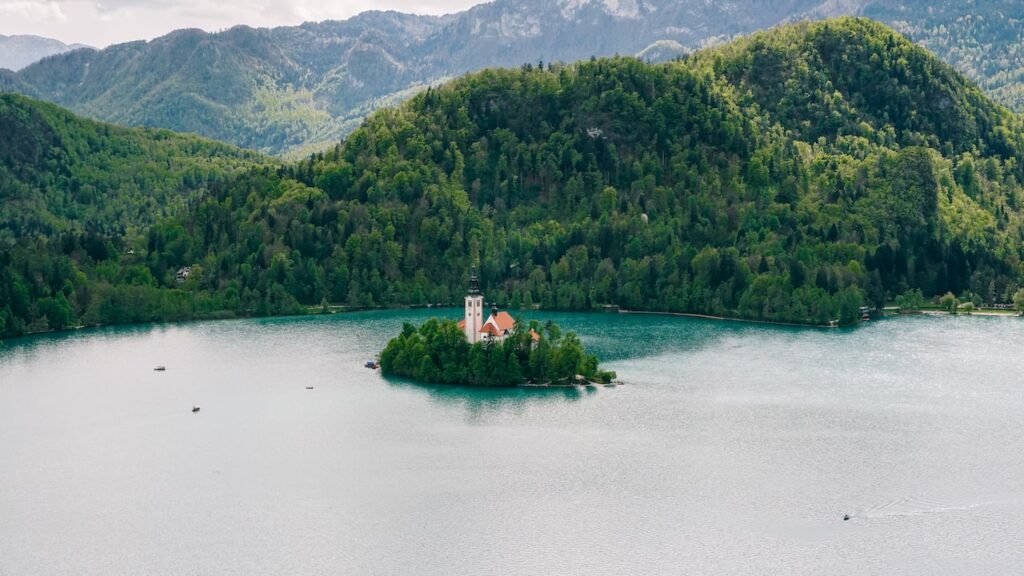
Slovenia, like its capital, is a compact country. If you have a week to spend in it, you can see most of its attractions. The Slovenian nature will remind you a lot of Austria, but the truth is that it has its own identity. That said, if you have enough days in Ljubljana and you’re not there for a few hours, it definitely deserves going on a day trip or two. There are marvelous things to see 1-2 hours away from Ljubljana, and it’ll be a pity to miss them.
Therefore, I will share some great day trips you can enjoy from Ljubljana and how to reach them.
Lake Bled. That’s the undeniable pearl of Slovenia (I wrote about Bled here). It is an impressive lake with a picturesque little island on one side. It takes approximately an hour to reach it and deserves to be seen. Slovenia’s rich nature creates a stunning atmosphere, and rowing to the little Bled island is memorable. You can book a tour to Lake Bled here.
Bonus: You can read more about Lake Bled in my dedicated article. Here’s what to expect from a day trip to Lake Bled and its surroundings.
Postojna Cave and Predjama Castle. The second most famous tour in Slovenia takes you to the beautiful Predjama Castle. However, the reason people go on this tour is usually the impressive Postojna Cave, where you can walk kilometers inside the formations of stalactites and stalagmites. It’s a great experience, for sure. You can book the Postojna Cave tour here.
Vipana Valley Wine Tour. I always enjoy winery tours (like the ones I did in Siena or Florence), and if you also like them, Slovenia has its own version of Tuscany. The Vipana Valley is the country’s wine region, and you can go on a half-day tour to taste the region’s wine. You can book the Vipana Valley Wine Tour here.
Where to eat in Ljubljana
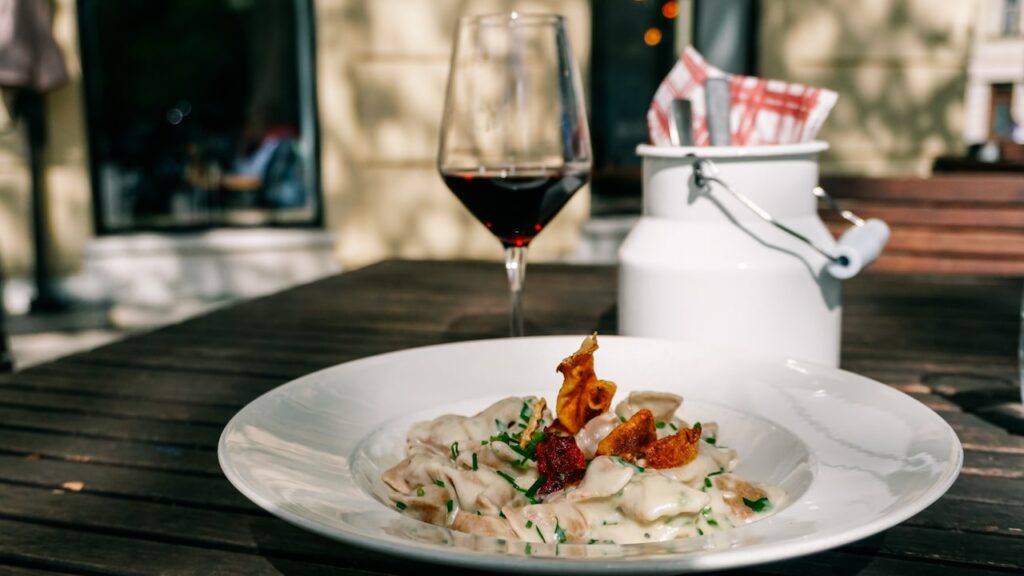
Food is an integral part of any journey abroad. Tasting the local cuisine is one of the finest things to do in life, and Ljubljana didn’t disappoint me. I ate in several places during my journey to Ljubljana, and two of them stole my heart. Of course, there’s no lack of excellent eateries in town, but since I always want to suggest the places I visit, I will only write down these ones.
Restaurant Figovec. If you want to try traditional Slovenian cuisine, look no further. This beautifully located restaurant (almost opposite the Cyanometer) cooks delicious dishes at reasonable prices. It has an outdoor area where you can enjoy the sunny days. I returned twice during my stay for food here. See Figovec on Google Maps.
My dumplings of Slovenia. This is the best place to eat Slovenian dumplings in Ljubljana. Located at the Central Market, this humble restaurant offers delicious dumplings—sweet and salty. It’s an experience to have lunch here, so don’t miss the opportunity. You can see it on Google Maps here.
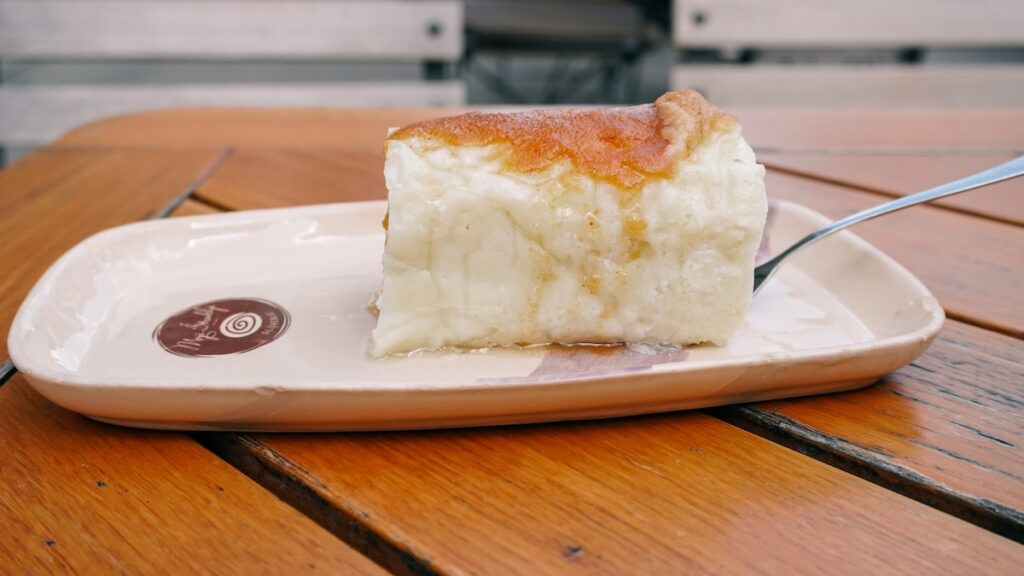
Cafe Capri. Lastly, look no further if you’d like to enjoy a delicious breakfast by the river. Cafe Capri prepares a small selection of breakfast dishes daily, and on sunny days, you can enjoy the outdoors. See Cafe Capri on Google Maps.
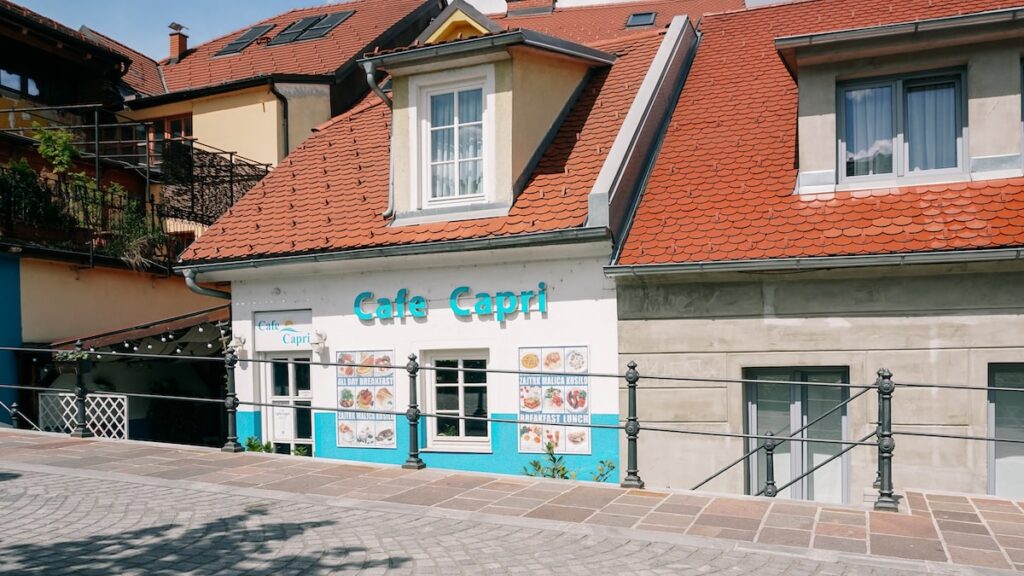
Where to stay in Ljubljana
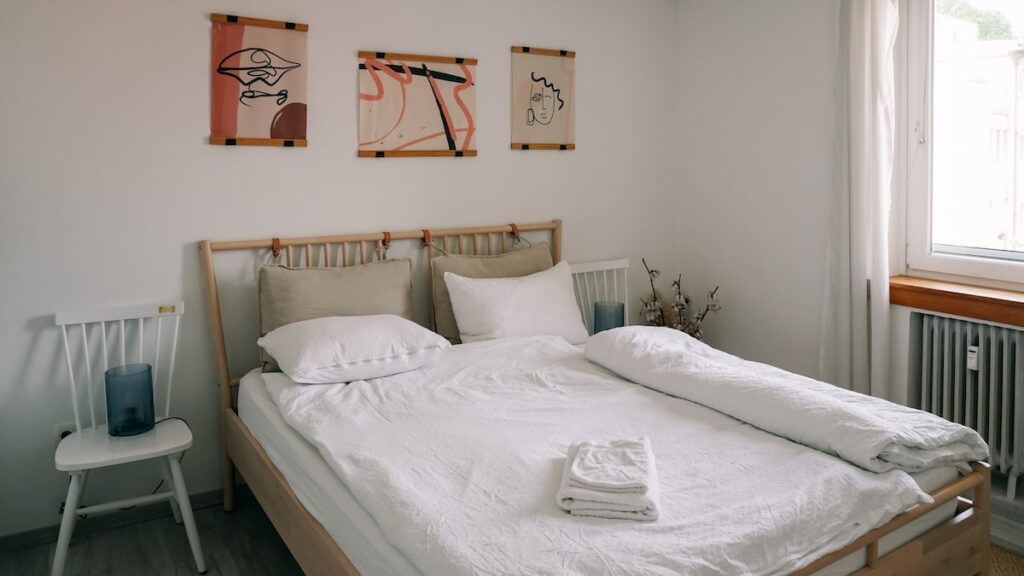
As a travel blogger, I always pay for my stays and try to get the most from the rooms I rent. Although I found Ljubljana reasonably priced, I must point out that accommodation prices in the city center are steep.
Obviously, when you are traveling abroad, the best option is to stay somewhere downtown. It will save you time, and you’ll be close to places of interest. After searching extensively on Booking.com, I decided to stay at Ella’s Castle View Apartment. It was a great choice! The apartment is on the fourth floor of a residential building and enjoys views towards the castle’s hill. The bedroom was spacious, and the living room was a great place to unwind after a long day out. Overall, it was a great stay; I highly recommend staying there if you find it available.
You can book Ella’s Castle View Apartment here.
Other places to stay in Ljubljana
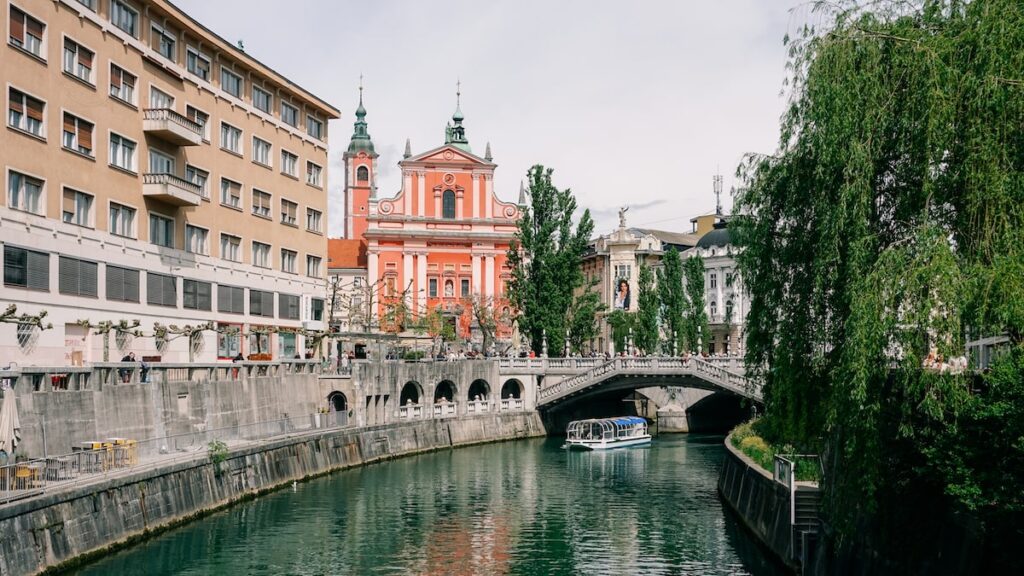
As I already stated, there’s no lack of accommodations in Ljubljana, but they come at a price. In the interactive map below, you can explore my handpicked selections for your stay in the beautiful capital of Slovenia. As a rule of thumb, I suggest checking around the castle’s area in the Old Town and being in direct proximity to the main attractions.
Things to do in Ljubljana: Conclusion
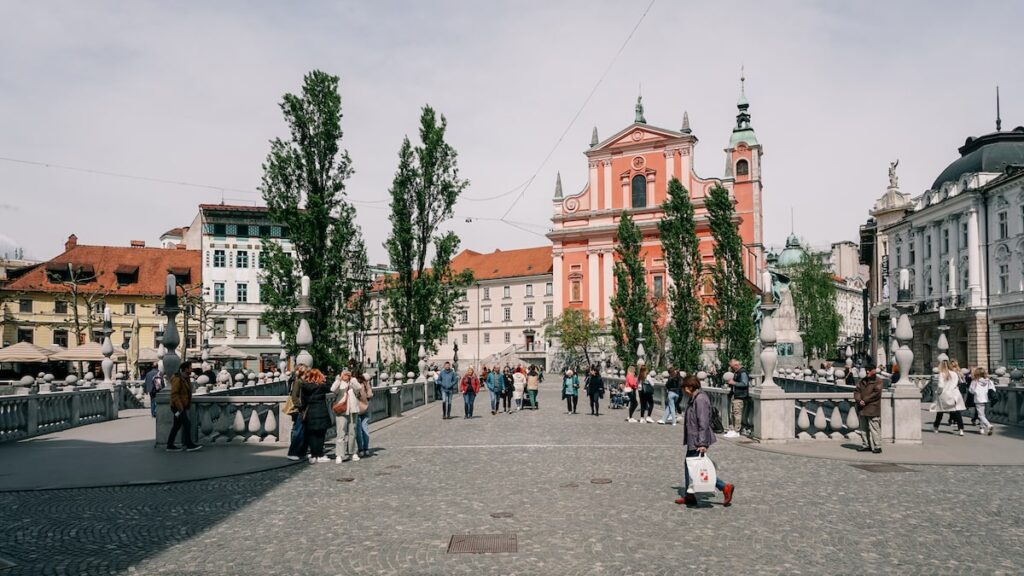
As you’ve read in this thorough travel guide to Ljubljana, there are plenty of things to do in the picturesque Slovenian capital. From boat tours to great museums and from bizarre locations to fantastic day trips, Ljubljana has everything a demanding traveler might want to see. In addition, the superb urban planning of the city and green spaces create a wonderful atmosphere. A laid-back vacation is always a plus; Ljubljana ticks all the boxes.
Therefore, I can only encourage you to visit Ljubljana and enjoy one of the least-visited and often-overlooked European capitals. The slow rhythms, the politeness of the locals, and the delicious food will definitely enhance your experience. Last but not least, save a day for a trip out of town. Slovenia is compact, and it’s not that often that you can see an entire country in a few days.
More about Ljubljana: Ljubljana River Tour Review
Pin it for later
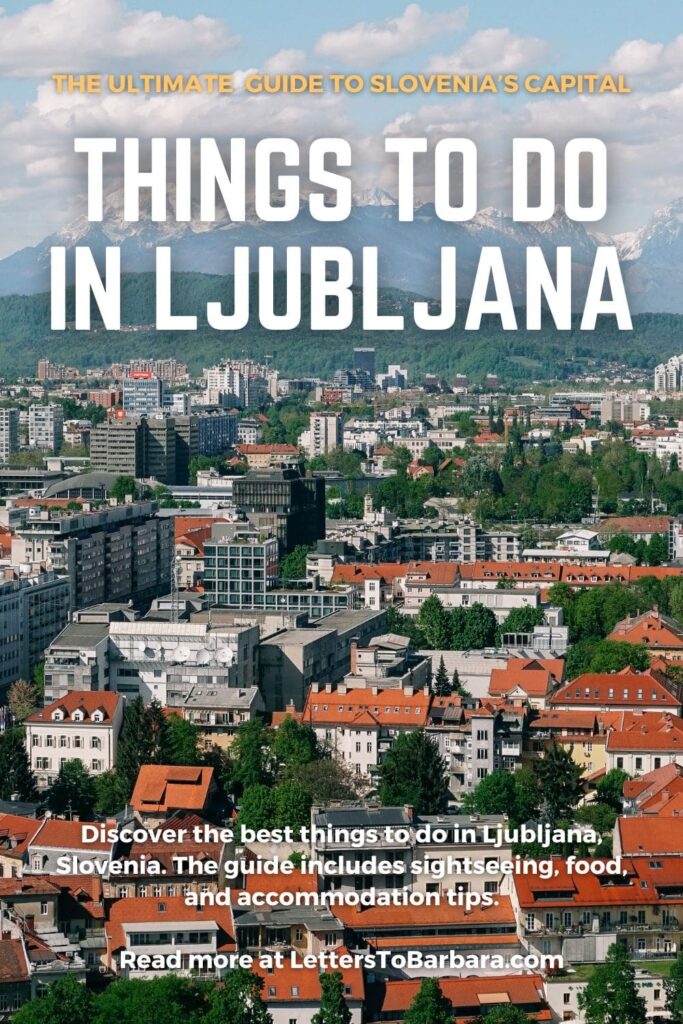
Sharing is caring. Share the ultimate travel guide to Ljubljana with your friends.
Last Updated on June 7, 2025 by George Pavlopoulos

